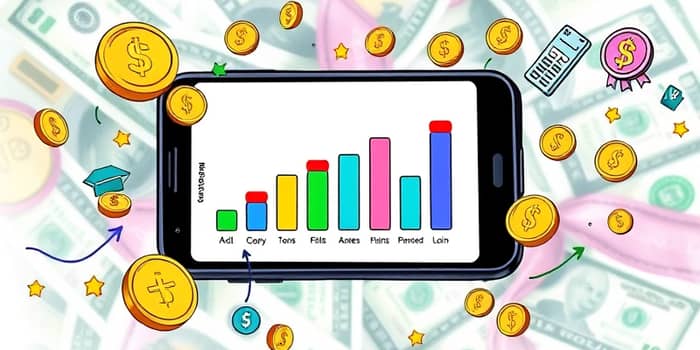
In an era where every tap and swipe can shape financial futures, gamification is revolutionizing how we save. By weaving playful mechanics into fintech platforms, app developers are turning routine saving tasks into engaging challenges, fostering stronger habits and deeper emotional connections with money.
At its core, gamification leverages intrinsic motivators like autonomy and mastery. Users respond powerfully to feedback loops, rewards, and social challenges. Self-Determination Theory (SDT) and the Technology Acceptance Model (TAM) both demonstrate that features such as real-time progress tracking and peer competition encourage repeated engagement and lasting behavior change.
Financial novices often gravitate toward clear economic incentives—simple rewards and milestones—while experienced savers enjoy advanced personalized challenges that test their skills and financial knowledge.
The global gamification market is on track to skyrocket from $6.33 billion in 2019 to between $20.84 and $30.7 billion by 2025, driven by a 24.8–27.9% CAGR. Simultaneously, the Personal Financial Management (PFM) app market expects to hit $3.34 billion by 2025, growing at 12.65% annually.
This surge reflects a mounting demand for customer engagement and personalization amid widespread mobile and fintech adoption. Financial institutions and startups alike are adopting gamified strategies to deepen loyalty, boost retention, and enhance user satisfaction.
By combining these mechanics, apps transform abstract financial habits into interactive journeys that foster measurable impact on savings and long-term commitment.
Numerous studies reveal impressive outcomes. Gamified finance apps can boost savings habits by 22% and elevate customer engagement by up to 48%. Meanwhile, companies integrating gamification see productivity gains approaching 50% and customer retention improvements of 22% in loyalty programs.
These figures underscore how strategic game design can translate into real-world financial progress, reinforcing the value of integrating play into personal finance.
As AI and machine learning evolve, fintech apps are adopting highly adaptive gamified experiences, tailoring challenges and rewards to individual behaviors. Ethical gamification is gaining traction, ensuring that game mechanics promote healthy financial habits rather than exploitative spending.
Other notable trends include immersive AR/VR savings tutorials, context-aware personalized nudges, and blockchain-based collectible rewards that users can trade or gift. These innovations point toward a future where saving money is not only practical but deeply engaging.
By following these steps, users can harness the full potential of gamified apps to cultivate robust saving routines and reach financial milestones.
Gamification has transcended its entertainment roots to become a powerful driver of financial well-being. With a projected market value exceeding $20 billion by 2025, gamified finance apps are reshaping how individuals perceive and practice saving.
From progress bars that offer instant gratification to community challenges that spark friendly competition, these tools make financial discipline accessible and enjoyable. By embracing game elements and leveraging the latest AI-driven personalization, users can transform saving into an engaging adventure—one that rewards discipline with real-world financial security.
Take the first step today: download a gamified savings app, set your goals, and embark on a playful journey toward a brighter financial future.
References













